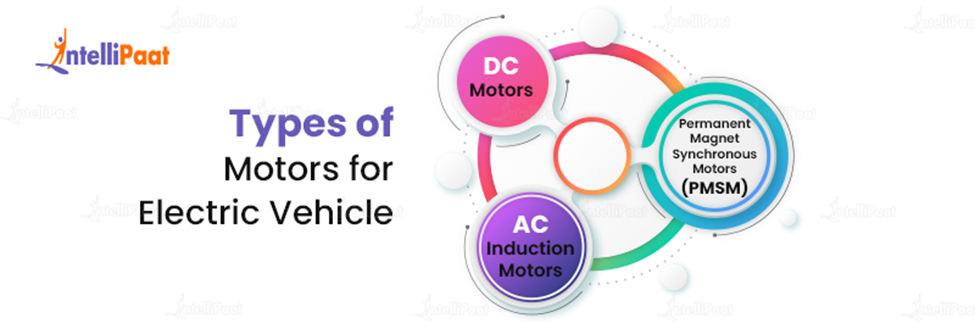Dysprosium: Understanding The Critical Role In Electric Vehicle Motors

Table of Contents
The Unique Properties of Dysprosium Making it Essential for EV Motors
Dysprosium's importance in electric vehicle motors stems from its exceptional magnetic properties. It boasts an incredibly high magnetic strength and a remarkably high Curie temperature. The Curie temperature is the point at which a ferromagnetic material loses its permanent magnetism. Dysprosium's high Curie temperature means it retains its strong magnetic properties even under significant heat generation, a crucial factor in the demanding operating conditions of electric vehicle motors.
This unique combination of properties significantly enhances motor efficiency and performance. Compared to other rare-earth elements, dysprosium offers:
- Superior magnetic properties: Leading to stronger magnetic fields within the motor.
- High coercivity: This means it resists demagnetization, even at high temperatures and under intense magnetic fields, ensuring consistent motor performance.
- Crucial for extreme conditions: Dysprosium-enhanced magnets maintain their strength and functionality even during high-speed operation or under heavy loads, crucial for optimal EV performance.
- Smaller, lighter, and more powerful motors: The high magnetic strength allows for the use of smaller and lighter magnets, resulting in more compact and efficient electric motors.
Dysprosium's Application in Permanent Magnet Motors (PMMs)
Dysprosium finds its primary application in permanent magnet motors (PMMs), the dominant motor type in electric vehicles. These motors rely on powerful permanent magnets to generate torque and power the vehicle. The most common type of permanent magnet used in EVs is the neodymium-iron-boron (NdFeB) magnet, and dysprosium plays a vital role in these magnets.
- Neodymium-iron-boron (NdFeB) magnets: Dysprosium is added to NdFeB magnets to enhance their thermal stability and prevent demagnetization at high operating temperatures.
- Improved thermal stability: The addition of dysprosium significantly improves the resistance of NdFeB magnets to demagnetization caused by heat generated during motor operation.
- Impact on motor performance: Dysprosium's contribution results in improved motor torque, higher rotational speed, and enhanced overall efficiency.
- Alternative magnet materials: While research is ongoing into alternative magnet materials, current options often lack the same performance characteristics as dysprosium-enhanced NdFeB magnets. These alternatives often compromise on power, efficiency, or thermal stability.
The Challenges of Dysprosium Supply and Sustainability
Despite its crucial role, the supply and sustainability of dysprosium present significant challenges. The geographic concentration of dysprosium production raises geopolitical concerns.
- Geopolitical concentration: A significant portion of the world's dysprosium supply is concentrated in a few countries, creating potential supply chain vulnerabilities and price volatility.
- Environmental impact: The mining and refining of dysprosium have environmental consequences, including habitat destruction and the generation of hazardous waste.
- Responsible sourcing and recycling: The industry is increasingly focusing on responsible sourcing practices and the development of efficient recycling technologies to minimize the environmental footprint of dysprosium extraction and use.
- Research into substitutes: Research and development efforts are underway to explore alternative materials and optimize magnet designs to reduce dysprosium dependence.
The Future of Dysprosium in the EV Industry
The future demand for dysprosium is inextricably linked to the growth of the EV industry. As EV sales continue to surge globally, the demand for dysprosium is projected to increase exponentially.
- Projected growth in EV sales: The rapid expansion of the EV market necessitates exploring solutions to address the increasing demand for dysprosium.
- Securing reliable supplies: Diversification of dysprosium sources, strategic partnerships, and investment in exploration and mining are crucial for ensuring a stable supply.
- Dysprosium-free or reduced magnets: Significant research is focused on developing dysprosium-free or dysprosium-reduced magnet designs to mitigate reliance on this critical material.
- Recycling and efficient utilization: Improving recycling technologies and promoting the efficient use of dysprosium in existing magnets are vital for sustainable growth.
Conclusion
Dysprosium’s importance in electric vehicle motors cannot be overstated. Its unique magnetic properties are critical for the performance and efficiency of permanent magnet motors, a cornerstone of the EV industry. However, the challenges related to its supply chain and environmental impact necessitate a multifaceted approach involving responsible sourcing, technological innovation, and the exploration of alternative materials. Addressing these challenges is vital for ensuring the sustainable growth of the electric vehicle sector. To learn more about the critical role of dysprosium and its impact on the future of electric vehicles, continue exploring resources on rare earth elements and sustainable EV technology. Understanding the role of dysprosium in EV motors is crucial for shaping a cleaner and more sustainable transportation future.

Featured Posts
-
 North Koreas Ukraine Involvement Troop Deployment Confirmed
Apr 29, 2025
North Koreas Ukraine Involvement Troop Deployment Confirmed
Apr 29, 2025 -
 Two International Games On The Horizon For The Green Bay Packers In 2025
Apr 29, 2025
Two International Games On The Horizon For The Green Bay Packers In 2025
Apr 29, 2025 -
 Debunking Ai Intelligence Exploring The Gaps In Current Ai Capabilities
Apr 29, 2025
Debunking Ai Intelligence Exploring The Gaps In Current Ai Capabilities
Apr 29, 2025 -
 Choosing Between One Plus 13 R And Pixel 9a Performance Camera And Value
Apr 29, 2025
Choosing Between One Plus 13 R And Pixel 9a Performance Camera And Value
Apr 29, 2025 -
 Exclusive Trump To Mandate List Of All Sanctuary Cities And States
Apr 29, 2025
Exclusive Trump To Mandate List Of All Sanctuary Cities And States
Apr 29, 2025
Latest Posts
-
 Trial Of The Century Takes A Turn Cardinals Team Presents Evidence Of Prosecutorial Misconduct
Apr 29, 2025
Trial Of The Century Takes A Turn Cardinals Team Presents Evidence Of Prosecutorial Misconduct
Apr 29, 2025 -
 Cardinal Case Allegations Of Prosecutorial Misconduct Supported By New Revelations
Apr 29, 2025
Cardinal Case Allegations Of Prosecutorial Misconduct Supported By New Revelations
Apr 29, 2025 -
 Cardinal Trial Claims Of Prosecutorial Misconduct Gain Traction With New Evidence
Apr 29, 2025
Cardinal Trial Claims Of Prosecutorial Misconduct Gain Traction With New Evidence
Apr 29, 2025 -
 How You Tube Became A Go To Platform For Older Viewers
Apr 29, 2025
How You Tube Became A Go To Platform For Older Viewers
Apr 29, 2025 -
 British Court Ruling Vatican Wins Case Against London Real Estate Fraud
Apr 29, 2025
British Court Ruling Vatican Wins Case Against London Real Estate Fraud
Apr 29, 2025
